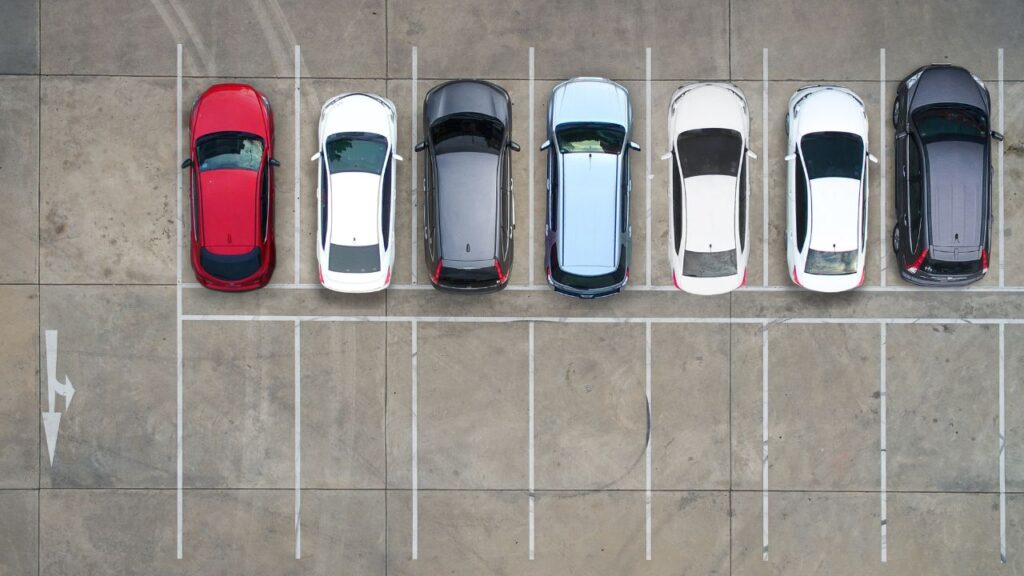Parking in tight spaces can be stressful and challenging for many drivers. Whether it’s parallel parking on a busy street or squeezing into a narrow garage, the fear of hitting another car or object makes parking one of the most anxiety-inducing parts of driving.
Parking assist systems use sensors, cameras, and radar to detect obstacles around your vehicle and help guide you into parking spots safely. These smart systems take the guesswork out of parking by providing real-time feedback to drivers or even controlling the steering automatically.
Modern parking assist technology comes in different forms, from basic sensor systems that beep when you get close to objects to fully automated systems that can park your car with minimal driver input. Understanding how these systems work and their benefits can help drivers make better decisions about their next vehicle purchase and feel more confident behind the wheel.
What Components Make Parking Assist Systems Work?
Parking assist systems combine sensors, cameras, and automated controls to help drivers park safely. These components work together to detect spaces, guide steering, and require regular maintenance to function properly.
How Do Sensors Detect Parking Spaces?
Ultrasonic sensors are the main tools that parking assist systems use to find open spaces. These sensors send out sound waves that bounce back when they hit objects like cars or walls.
Most cars have four to twelve sensors placed around the bumpers. The sensors can detect objects as close as six inches away from the vehicle.
Radar sensors work alongside ultrasonic sensors in some systems. They use radio waves instead of sound waves and can detect objects from farther away.
The sensors measure the size and distance of parking spaces. They send this information to the car’s computer, which decides if the space is big enough for the vehicle.
When the system finds a good parking spot, it alerts the driver through lights or sounds on the dashboard.
What Role Do Cameras Play in Parking Assist?
Backup cameras show drivers what is behind their vehicle on a screen inside the car. Many systems also include side cameras and front cameras for a complete view.
The cameras provide visual feedback that helps drivers see obstacles the sensors might miss. They work especially well for detecting low objects like curbs or small posts.
Computer algorithms analyze the camera images to identify parking spaces and obstacles. This information combines with sensor data to create a complete picture of the parking area.
Some advanced systems use 360-degree camera views that show the car from above. This bird’s eye view makes it easier to see how much space is available on all sides.
How Does Automated Steering Work?
Electric power steering systems can take control of the steering wheel during parking. The car’s computer calculates the exact steering movements needed to fit into the parking space.
The system controls steering angles and timing to guide the vehicle into the spot. It can handle both parallel parking and perpendicular parking situations.
Remote parking assistance allows some cars to park themselves without anyone in the driver’s seat. The driver uses a key fob or smartphone app to control the parking process from outside the vehicle.
The automated steering works with the brakes and throttle to control speed during parking. This ensures the car moves slowly and safely into the space.
Why Is System Calibration Important?
Sensor calibration ensures all components work together accurately. Sensors need to be properly aligned to detect objects at the correct distances and angles.
Camera calibration makes sure the visual display shows the true position of obstacles. Misaligned cameras can make objects appear closer or farther than they actually are.
Regular software updates keep the system running smoothly. Car manufacturers often release updates that improve parking accuracy and add new features.
Cleaning sensors and cameras is essential for proper operation. Dirt, snow, or ice can block sensors and cause the system to stop working or give false readings.
Professional calibration may be needed after accidents or repairs that affect the bumpers or camera mounting points.
What Types of Parking Assist Systems Are Available and How Do They Help You?
Parking assist systems come in different forms, from basic sensor alerts to fully automated parking. Ultrasonic and radar systems detect obstacles differently, while automated features can actually steer the car for drivers.
How Do Ultrasonic and Radar-Based Systems Compare?
Ultrasonic sensors are the most common type found in parking assist systems. These sensors send out sound waves that bounce back when they hit objects. They work well for detecting cars, walls, and other solid barriers.
Most basic parking systems use ultrasonic sensors in the front and rear bumpers. They make beeping sounds that get faster as the car gets closer to something. The sensors work best at slow speeds and short distances.
Radar-based systems use radio waves instead of sound waves. They can detect objects from farther away than ultrasonic sensors. Radar works better in bad weather like rain or snow.
Some cars combine both types of sensors. This gives drivers better coverage and more accurate readings. The radar handles long-range detection while ultrasonic sensors focus on close-up obstacles.
What’s the Difference Between Automated Parking and Parking Guidance?
Parking guidance systems help drivers but don’t control the car. They use cameras and sensors to show parking spaces on a screen. The driver still does all the steering and pedal work.
These systems often include parking sensors that beep or show visual alerts. Some display colored lines on a screen to show the car’s path. The driver gets help seeing blind spots and tight spaces.
Automated parking systems can actually steer the car into parking spots. The driver usually still controls the gas and brake pedals. The car’s computer takes over the steering wheel to guide the vehicle into the space.
Advanced automated systems can handle parallel parking and perpendicular parking. Some newer cars can even park themselves while the driver stands outside with a smartphone app.
How Do These Systems Make Parking Safer?
Parking assist systems help prevent backing accidents and bumper damage. The sensors detect children, pets, and small objects that drivers might miss in mirrors. This is especially important in busy parking lots.
Blind spot detection reduces the risk of hitting other cars or pedestrians. Many accidents happen at low speeds in parking areas. The warning alerts give drivers extra time to stop.
The systems also help protect expensive car parts. Bumper repairs can cost hundreds of dollars. Prevention through parking assist saves money on body work and insurance claims.
Visual displays show exact distances to obstacles. This helps drivers park closer to curbs without scraping wheels or bumpers.
Do Parking Assist Systems Make Cars Easier to Use?
New drivers benefit greatly from parking assist technology. Learning to parallel park becomes much less stressful with sensor guidance. The systems build confidence in tight parking situations.
Older drivers find the technology helpful as vision and mobility change. Clear audio alerts and visual displays make parking easier when turning around becomes difficult.
Large vehicles like SUVs and trucks have bigger blind spots. Parking assist systems give drivers better awareness of their surroundings. This makes driving these vehicles more accessible to more people.
The technology also saves time in crowded parking areas. Drivers can park more quickly and accurately with system guidance. This reduces traffic in parking lots and makes the experience smoother for everyone.



